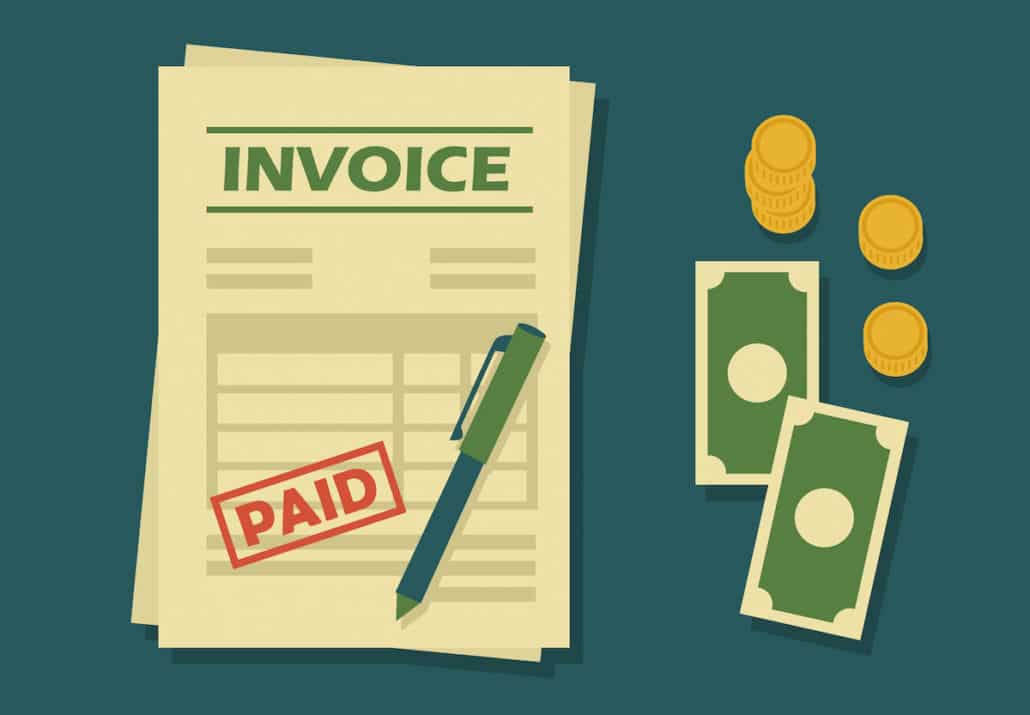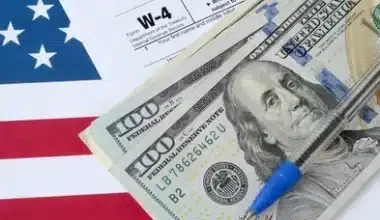For those who have a lot of debt, especially car loans with high-interest credit, the only attractive option you have is a principal-only payment which helps to pay it off on time. But then, the principal-only mortgage payment is an additional payment applied directly to your mortgage loan amount which automatically pays off your loan. That extra payment toward the principal balance can help you reduce the overall cost of your mortgage or car loan. On the other hand, the principal-only payment calculator estimates your monthly mortgage payment. Read further for more understanding of how it works.
What Is a Principal-Only Payment?
On different occasions, when you make a periodic loan payment, some part goes to the downpayment. The principal of the loan and the other part goes to the interest charges of the lender. High-interest debt like credit cards takes a large portion of your monthly payment interest. This means that they only pay a small amount of the principal each month. However, When you make a principal-only payment, the entire amount goes toward paying off the principal instead of the interest.
Principal-only payments are made in addition to your regular monthly payment. You can save a lot of money in the long run by making extra payments on the principal. In addition, making your frequent debt payments. This is especially true for debts with high-interest rates. Making principal-only payments may also improve your credit score, in some cases. This method is most effective when in use with high-interest debt such as credit card debt. However, if you have a credit card with a 27% APR, making extra payments to pay down the principal will eventually decrease the amount of interest you’ll pay over time.
Principal-only payment can also work with lower-interest debts such as a car loan or mortgage loan. A principal-only mortgage payment is an additional payment on your mortgage loan principal amount. It exceeds the scheduled monthly amount, possibly saving you on interest and helping you to pay off your mortgage early. You may have to notify your lender that you want to put the extra funds toward your principal and not the interest.
Pros and Cons of Principal Only Payments
consider the following benefits and drawbacks of making additional principal payments.
Pros
- Borrowers can save money on interest by paying more than they owe every month.
- Paying down your balance can shorten your loan term and pay off your mortgage early.
- It gives you the opportunity to focus your attention on other debt, such as credit cards, student or car loans, and improve your financial standing.
- Paying off your mortgage earlier allows you to use that money elsewhere
- Making an extra payment toward the actual loan, helps you pay the loan off much quicker.
- As the loan amount decreases, so does the interest amount.
- Paying extra payments toward your loan, in general, will help you pay the loan off quicker, but by making even just a few principal-only payments, you will pay the loan off even faster.
- Making principal-only payments can lower the total interest paid on the loan. When you pay down your loan balance, the interest that accrues on that balance typically also decreases.
Cons
- Some banks may charge you a possible fee for making extra payments every month.
- Paying your loan off early could subject you to a prepayment penalty from your lender. Rocket Mortgage charges no prepayment penalties.
- Making extra payments means you can’t use that money for something else, like building up an emergency fund or investing.
- If your lender has a pre-payment penalty attached to the loan agreement, then you will be charged a fee.
- If you pay the loan off earlier than agreed upon as you can guess, this defeats the purpose of paying your loan down quicker using principal-only payments because the lender will recoup some of the interest that they didn’t get.
- When you have other high-interest debt, such as credit cards, then the interest that you’re paying on it can offset the money that you will be saving by paying your auto loan down at a quicker rate. Credit Karma advises that you pay that debt off first before devoting more money toward your auto loan.
Principal Only Payments and Lenders
Lenders permit their borrowers to make principal-only payments to curtail the amount they are owning. Many mortgage lenders do this as a courtesy to their clients who are on top of their payments. and want to pay off their mortgages earlier. However, making extra principal payments when the lender does not permit it can backfire on a borrower. therefore, if there are prepayment penalties, any extra money paid toward the debt may not all be allocated to the principal as the borrower intended. meanwhile, you should review with your lender or be in agreement before sending in a principal-only payment to see and know how this money will be applied to your debt. Most lenders that do not permit this type of payment may choose to direct the money toward both the interest and principal.
Furthermore, different lenders have different rules about how to make principal-only payments. Some lenders will only accept a check that is specifically marked “for principal only.” Other lenders will allow borrowers to specify this application, online. Some lenders may only choose to accept a principal-only payment by phone. Other lenders automatically apply any additional payments that are made to the principal. And, of course, some lenders don’t offer this option at all. Borrowers will need to consult with their lender to see what their policy is before making this type of payment.
Principal Only Payment Car Loan
When you get a loan for a car, there are also two parts to it, the principal and the interest. The money that is loaned out and the additional amount that you pay to borrow the money. When you take out a loan, the payment goes toward the principal and the interest. As previously mentioned, if you make extra payments on the loan, then those might go toward the interest and any other fees first.
However, if your lender permits you to make a “principal only” payment on a car loan as an extra payment, then you will actually be applying all of the money to the loan amount as objected to some of it paying the interest as well. If your lender offers this payment option, then you can make the payment at the bank, on the phone, and possibly even online.
Benefits and Penalties on Making a Principal-Only Payment Car Loan
There are several moving parts in a car loan. The lump sum of money you borrow to pay for the vehicle (and, sometimes, its taxes and fees) is the principal. You’ll also pay interest, which is what it costs to borrow the principal. The structure of auto loans differs depending on your lender. In all-around, part of each monthly payment goes toward both the interest and the principal. When you ask a lender for money to buy a car, it evaluates your financial situation to make sure you can afford monthly payments that include the price of the car plus interest charges.
Paying off a car loan early can be beneficial with principal only on payment. However, not all lenders allow principal-only payments, so make sure to confirm with yours if this is an option. Doing so lowers the amount of money they make on your loan.
Once you’ve confirmed with your lender that they’ll apply amounts in excess of your regular monthly payment to the principal of the car loan, you can either make larger than usual payments or send extra money when your budget allows.
Make a car payment weekly instead of once a month. By dividing your usual monthly car payment in half, you’ll pay the equivalent of one extra payment every year, which will reduce your principal and the total amount of interest you’ll pay. Round up your payment, if your normal car payment is $329, round it up to $400. If you’re having trouble coming up with the extra cash, it may be possible to earn additional income and/or reduce expenses using these hacks.
How to Make a Principal Only Mortgage Payment
To make a principal-only payment on a mortgage calculator you need to consider budgeting some extra money on a monthly basis to make an additional principal payment toward your principal balance. There are several ways you can go about this.
Firstly is to make more regular payments or wait to gather them into one large annual payment. Alternatively, you could pay a greater sum on each monthly installment which can help you avoid possible fees. Lastly, you can wait until you have an inflow of money, such as after receiving a gift or an inheritance. Again, make sure to double-check with your lender that the extra payments are directly on your principal.
A principal-only payment calculator can help you estimate your monthly mortgage payment. This calculator estimates how much you’ll pay for principal and interest. You can also choose to include your taxes and insurance in this payment estimate.
Start by providing the home price, down payment amount, loan term, interest rate, and location. If you want the payment estimate to include taxes and insurance, you can input that information yourself. Then, click “Calculate” to see what your monthly payment will look like based on the numbers you provided.
Adding different information to the principal-only payment calculator will show you how your monthly payment changes. Try out different down payment amounts, loan terms, interest rates, and so on with a principal-only payment calculator to see your options.
Principal Only Payment Calculator for Weekly Payments
If you’re not sure whether you can make an extra payment each month, you can try to make weekly payments instead. Many mortgage lenders offer home loans that amortize every two weeks. Instead of once a month for those who want to pay off their loans early. Under this plan, you’ll pay half your mortgage payment every two weeks. However, making 13 full loan payments each year, instead of 12. This can materially curtail the amount you are owning because they will repay the loan balance more quickly. Making a weekly principal-only payment calculator on your mortgage can help you pay off your loans. A 30-year loan in about 22 years, a 20-year loan in about 17 years, a 15-year loan in about 13 years, and a 10-year loan in about 9 years.
Making weekly principal-only payments on car loans may also be possible, depending on the lender’s policies and practices. Most lenders will not automatically allocate an extra payment that is made each year toward the principal of the loan. However, they may do so if the borrower identifies this with their extra payment. Weekly payments are especially convenient for borrowers who get paid every two weeks.
Furthermore, the principal is the amount of money you borrow when you initially take out your home loan. To calculate your mortgage principal, simply deduct your down payment from your home’s final selling price. to calculate the scheduled principal payment, start from the first month and take the total amount of the loan and multiply it by the interest rate on loan. Then for a loan with monthly repayments, divide the result by 12 to get your monthly interest. Subtract the interest from the total monthly payment, and the remaining amount is what goes toward the principal.
How do you calculate principal-only payments?
When you first take out a home loan, you borrow a certain amount of money, which is known as the principal. Simply deduct your down payment from the final selling price of your home to determine your mortgage principal.
Is it better to pay interest or principal?
Is it preferable to pay the principal or the interest first? In general, you want to limit your payments to those that go toward the principal. It has been recommended to avoid paying interest as much as possible within the parameters of your loan because doing so will cost you more money.
What is principal-only payment vs regular payment?
You can significantly reduce your interest costs by paying down your mortgage more quickly. You are now expected to pay more in interest than principal during the course of your mortgage unless your interest rate is less than 3.3%.
What is the difference between a regular payment and a principal payment?
Your total monthly payment typically includes additional charges like homeowners insurance, taxes, and even mortgage insurance, which is why it differs from your principal and interest payments.
What is the difference between principal and interest and interest only?
Typically, when you make a loan payment, a portion of the main sum and the accumulated interest is paid off. Principal and interest repayment is the term used for this. You might be able to opt to make interest-only payments for a set time period, in which case you would only be paying the interest that has been levied.
Can you pay off the principal before interest?
Yes! If you choose to make mortgage advance payments, be sure to inform your lender that you want the money to go toward the principal. Some mortgage lenders deduct any overage from your subsequent minimum monthly payment. You won’t be able to lower your interest payments by doing this.
How do I know which loan to pay off first?
The debt avalanche approach arranges your debts according to interest rate, starting with the highest interest rate. You pay the bare minimum on each obligation while focusing on the one with the greatest interest rate.
Principal Only Payment FAQs
Is it better to make principal-only payments?
Yes, because it can help you pay off a loan faster and reduce the overall cost of the loan.
Do principal-only payments lower monthly payments?
Paying extra on your auto loan principal won’t decrease your monthly payment. Paying on the principal reduces the loan balance faster, and helps you pay off the loan shortly.
What is a principal-only payment?
Principal-only payments are made in addition to your regular monthly payment. When you make principal-only payments, the amount owed is reduced, but the final due date of the loan does not change.
Related Articles
- PRINCIPAL PLACE OF BUSINESS LLC: Definition & Examples
- Mortgage Calculator Amortization: A Comprehensive Guide (Updated)tab)
- Payoff Mortgage Calculator: All you need for more efficient calculations
- How Much Does A Construction Worker Make In The US Per Hour, Weekly, Monthly & Yearly
- AVERAGE DOWN HOUSE PAYMENT: How Much You Need to Buy a House 2023
- TAX DEPRECIATION: Definition, Examples & Calculation






